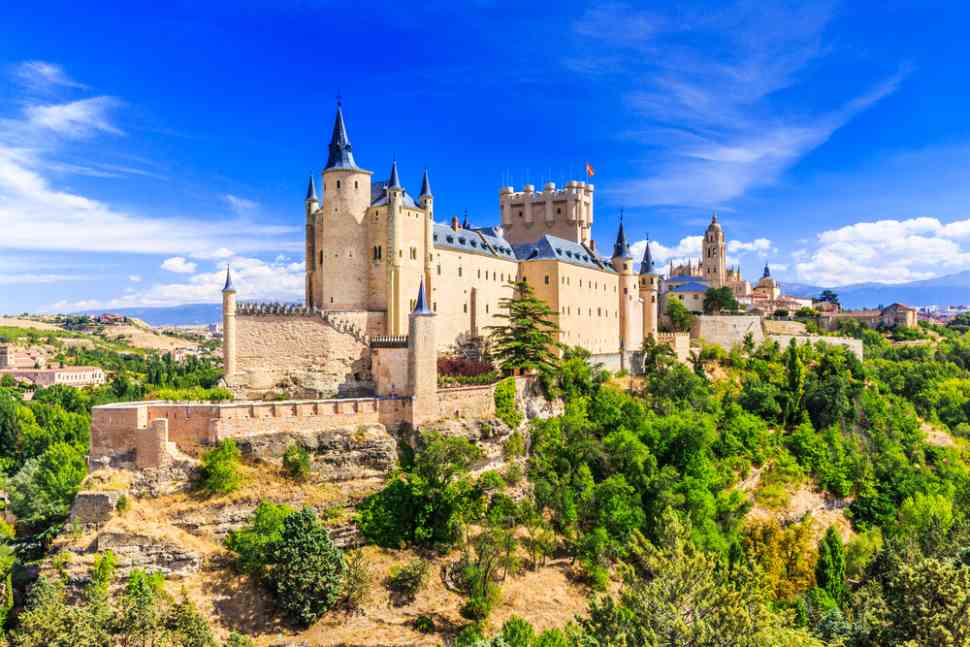The History and Captivating Sights of Segovia

Somewhere in the center of Spain, next to the enchanting capital of Madrid and specifically in the autonomous region of Castile and Leon, we meet Segovia. This is not just a typical town, somewhere lost in a province of the Iberian Peninsula, but a characteristic cultural hot spot for lovers of the medieval atmosphere and a must-see for travelers worldwide. Let’s learn more about Segovia today.
- The history of the city
With a walk in the city center and the surrounding neighborhoods, one can easily understand that this place has received many influences from different cultures over the centuries. Until the last years of pre-Christian history, Segovia was inhabited by the tribe of the Celts, to whom it owes its ancient name ”Segobriga,” with the most faithful translation defining it as the “city of victory.”
However, around 75 B.C., the Romans reached Segovia, and from that point until the 6th century. A.C. became a Roman and then a Byzantine province towards the end of the 6th century. Therefore, the empire began to lose a large part of its possessions. Thus Segovia was subjugated to the Visigoths.
About a century later, the city, along with the entire Iberian Peninsula, was handed over to the administration of the Arabs. It remained under Islamic rule until the end of the 15th century, when it became ”Latin” again. It was then that Segovia experienced the greatest prosperity in its history. It was perhaps the most important center of trade in wool and textiles. - The imposing Roman aqueduct
Cultural attractions from many different historical periods can be found in Segovia. The Roman aqueduct is one of them; it is one of the city’s most important attractions. It is considered the largest aqueduct built during the Roman period to its full extent. It was constructed around the 1st century B.C. and carried water from the Fuente Fria River, 17 kilometers from Segovia. During the Islamic period, a part was destroyed; however, during the 15th century, it underwent a radical restoration, and in some places, it was reconstructed.
It is the “jewel” of the city, and its contribution to the city’s water supply for many centuries and until the middle of the 19th century was enormous. Since 1884, it has been declared a national architectural monument, and only in 2005, the work on its complete reconstruction was completed. - Alcazar Castle, the jewel of the city
The reins of the most important monument of Segovia are also in the so-called “Alcazar.” It is a despotic Castle-Palace with its shape reminiscent of a ship’s bow. The Arabs built it; however, it took the main form that we see today after the recapture by the Christians. Since then, it has been used as a royal residence and as a very important fortress which the future kings of the kingdom of Castile increasingly expanded.
As impressive as it is externally, so is its interior. Alcazar has everything; amazing throne rooms, Royal Chambers, Gold-ceilinged Salas, Knights ‘ halls with elegant decoration and works of art, and various frescoes. - The unique temples of Segovia
Another sign of the heritage that Segovia has gained from its past is the large number of impressive temples that have been preserved. In Segovia, one can find ancient Roman places of worship, old Jewish synagogues, and Catholic temples of the era, with many equally well-preserved monasteries of the Middle Ages.
However, the most imposing church in the city is none other than the Cathedral. An imprint of Gothic architecture constructed at the end of the Middle Ages and the beginning of the Renaissance, the Cathedral is another gem in the medieval Walk of the Visitor.
Beautiful pictures, paintings, the 21 picturesque chapels that overwhelm us, and, of course, the bell tower compose another shocking architectural masterpiece that should be included in the agenda of every traveler of the region. - Today’s architectureThe term “fairytale city” for Segovia is attributed to the above imposing buildings, the houses’ exceptional architecture, and the city’s main part. With a simple walk in the city center, the visitor meets many small palaces, medieval facades, paved courtyards, shields, turrets, and beautiful squares.
The houses’ structure is traditional and has tiles decorated with beautiful graffiti, while even the taverns, the small streets, and the small shops are lovely.
Have you read?
Rebranding for all the right reasons by Charlene Gervais.
3 Ways CEOs Can Create a More Resilient Workforce by Bjorn Reynolds.
The Number One Question Leaders Are Not Asking That Will Change the Game When They Do by Stef Ziev.
What Leadership Skills in the 21st Century Leaders Need by Prof. M.S. Rao, Ph.D.
CEO Spotlight: Bhaktraj Singh, CEO of Hazelton Group.
Bring the best of the CEOWORLD magazine's global journalism to audiences in the United States and around the world. - Add CEOWORLD magazine to your Google News feed.
Follow CEOWORLD magazine headlines on: Google News, LinkedIn, Twitter, and Facebook.
Copyright 2025 The CEOWORLD magazine. All rights reserved. This material (and any extract from it) must not be copied, redistributed or placed on any website, without CEOWORLD magazine' prior written consent. For media queries, please contact: info@ceoworld.biz








